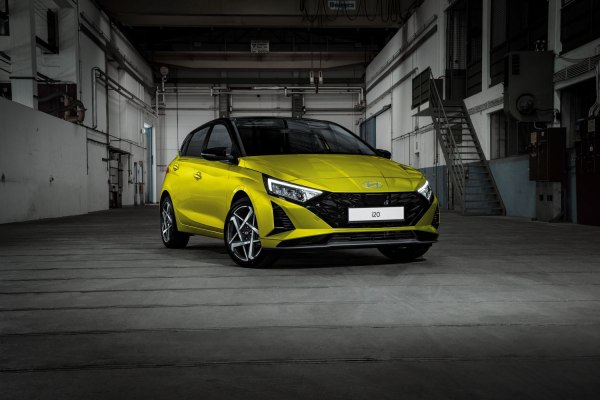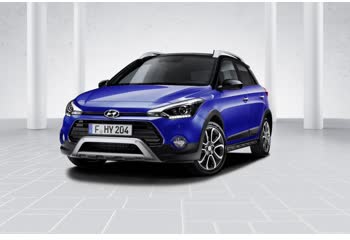Everything you need to know about specifications and performance - Hyundai i20 2023 - 1.0 T-GDi (100 Hp)

Overview:
What is the engine capacity of a Hyundai i20 2023?
The engine capacity of the Hyundai i20 2023 is 998.
Hyundai i20 2023 How many horsepower?
The engine power of the Hyundai i20 2023 is 100 Hp @ 4500-6000 rpm..
What is the Hyundai i20 2023 engine?
Hyundai i20 2023 engine is G3LE. (Click to see other cars using the same engine)
What is the recommended oil for a Hyundai i20 2023 engine?
The recommended oil for a Hyundai i20 2023 car engine is 0W-20.
What type of camshaft transmission system is used in a Hyundai i20 2023 engine?
chain is used to transmit motion.
General:
Brand: Hyundai
Model: i20
Generation: i20 III (facelift 2023)
Modification (Engine): 1.0 T-GDi (100 Hp)
Start of production: May, 2023
End of production:
Powertrain Architecture: Internal Combustion Engine
Body type: Hatchback
Seats: 5
Doors: 5
Engine:
Engine systems: Start & Stop System
Power: 100 hp @ 4500-6000 rpm.
Power per litre: 100.2 hp/l
Torque: 172 nm @ 1500-4000 rpm.
Engine Model/Code: G3LE
Engine displacement: 998
Number of cylinders: 3
Engine configuration: Inline
Number of valves per cylinder: 4
Fuel injection system: Direct injection
Engine aspiration: Turbocharger, Intercooler
Valvetrain: DOHC
Engine oil capacity: 3.6 l
Coolant: 5.77 l
Engine layout: Front, Transverse
Cylinder Bore: 71 mm
Piston Stroke: 84 mm
Compression ratio: 10.5:1
recommended engine oil: 0W-20
euro standards: EURO 6
engine lifespan (km): ~220 000
weight (kg): 84
timing drive: chain
Performance:
Fuel Type: Petrol (Gasoline)
Emission standard: Euro 6D
Acceleration 0 - 100 km/h: 10.4 sec
Acceleration 0 - 62 mph: 10.4 sec
Maximum speed: 188 km/h
Weight-to-power ratio: 10.7 kg/Hp, 93.9 Hp/tonne
Weight-to-torque ratio: 6.2 kg/Nm, 161.5 Nm/tonne
Acceleration 0 - 60 mph: 9.9 sec
Space:
Kerb Weight (kg): 1065-1175
Max. weight (kg): 1600
Max. roof load: 70 kg
Max load (kg): 425-535
Trunk (boot) space - maximum: 1165 l
Trunk (boot) space - minimum: 352 l
Permitted trailer load with brakes (12%): 1110 kg
Fuel tank capacity: 40 l
Permitted trailer load without brakes: 450 kg
dimensions:
Length: 4065 mm
Width: 1775 mm
Height: 1450 mm
wheelbase: 2580 mm
Front track: 1531-1539 mm
Rear (Back) track: 1536-1543 mm
Minimum turning circle (turning diameter): 10.4 m
Powertrain, Suspension and Brakes:
Drivetrain Architecture: The Internal combustion Engine (ICE) drives the front wheels of the vehicle.
Drive wheel: Front wheel drive
Number of gears and type of gearbox: 6 gears, manual transmission
Front brakes: Ventilated discs, 280 mm
Rear brakes: Disc, 262 mm
Assisting systems: ABS (Anti-lock braking system)
Steering type: Steering rack and pinion
Power steering: Electric Steering
Tires size: 195/55 R16; 215/45 R17
Wheel rims size: 6.0J x 16; 7.0J x 17
Front suspension: Independent type McPherson
Rear suspension: Torsion
See also

Other generation.
Its production began in 2018 until 2020

Same engine. (G3LE).
Its production began in 2020 until 2022

Same engine. (G3LE).
Its production began in 2020 until Now

Write a comment